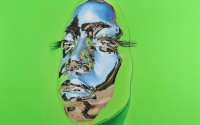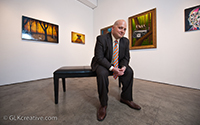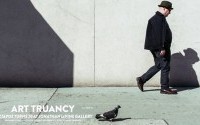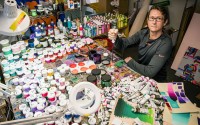KIP OMOLADE
HEAVY METAL DEITY
INTERVIEW BY RON ENGLISH // PORTRAIT BY BRYAN DERBALLA
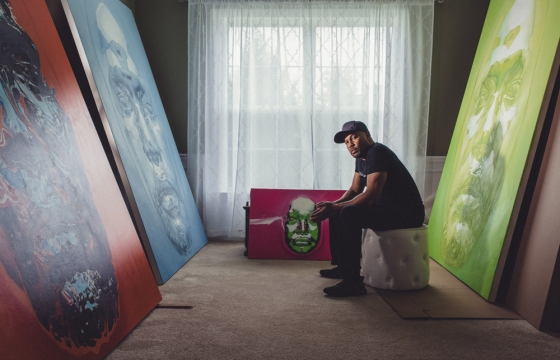
I haven’t yet had the pleasure of meeting Kip Omolade face-to-face, but I have certainly pondered the faces he has made. I have always been mesmerized by reflective surfaces and fully understand the complexities of painting oil on canvas to mimic light on metal. The heft of Kip’s art stems from its elemental expression of mystery in simplicity and of specificity into universal patterns and form.
Ron English: How personal is your art?
Kip Omolade: My art is deeply personal. The use of color is directly connected to my NYC graffiti days. The sci-fi look is connected to my childhood and teenage interest in comic books and my internship at Marvel Comics. The use of oil paint is connected to my painting from life at SVA and the Art Students League of New York.
Your inspiration comes from the African art tradition of mask making. Have you retained any of the original inspiration, like magical thinking or power imbuing in your modern interpretation?
I’m inspired by the African representation of deities. The Nigerian Ife culture specifically created sculptures that combined the natural features of actual leaders and a spiritual ideal. With my latest self-portraits, I’m exploring the role of an artist as a sort of deity.
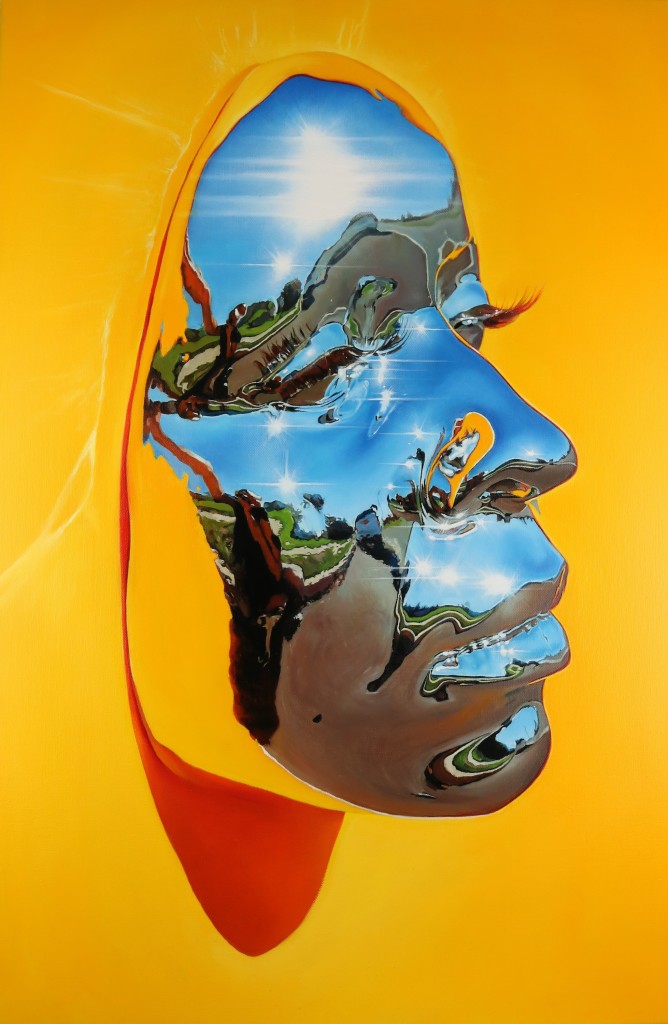
How important are the details in the reflections? Do they constitute a primary or a secondary narrative?
It depends. I usually work within two motifs. Sometimes I’m interested in a spiritual, timeless look, so I’ll position my sculptures so that the reflections are reduced to abstract shapes and colors. Other times, I’ll take my sculptures outside so I can get reflections of the world and me. This approach gives me a chance to capture a specific moment in time and make a landscape, a portrait and a still life all in one painting.
People always look for themselves in reflections. How do you exploit this human inclination?
I don’t know if I consciously try to exploit people’s need to see themselves in reflections. I’m more interested in representing mere human existence. However, some people see my work online and think I just mount sculptures against colorful backgrounds. I suppose that when they see the work in person, they expect to see themselves but are surprised to see that the work is a painting.
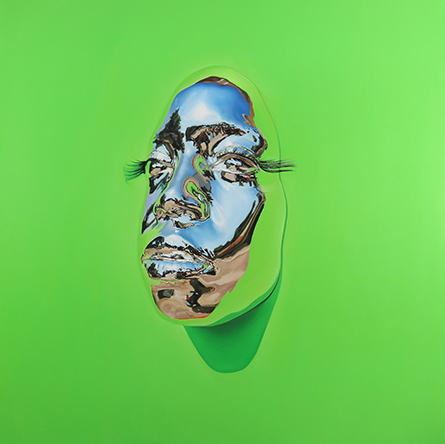
There is a dichotomy between the work of art as a unique object and a work of art as an illustration of something else. You seem to be trying to balance these two artistic strategies in your work. Am I reading this correctly?
Yes. I want viewers to notice the beauty of my work and my craftsmanship, but I also want to illustrate the historical significance and cultural meaning. One of the things I appreciate about your work is that it’s skillfully done and captures the viewer’s attention, but there is also a message about society.
Have you ever thought of doing the reverse version to create a model that would be the inverse of the face? Then you could stage a more internal narrative in the room that would reflect into it, for a counterpoint piece.
That’s an interesting idea. I’ve never thought of that.
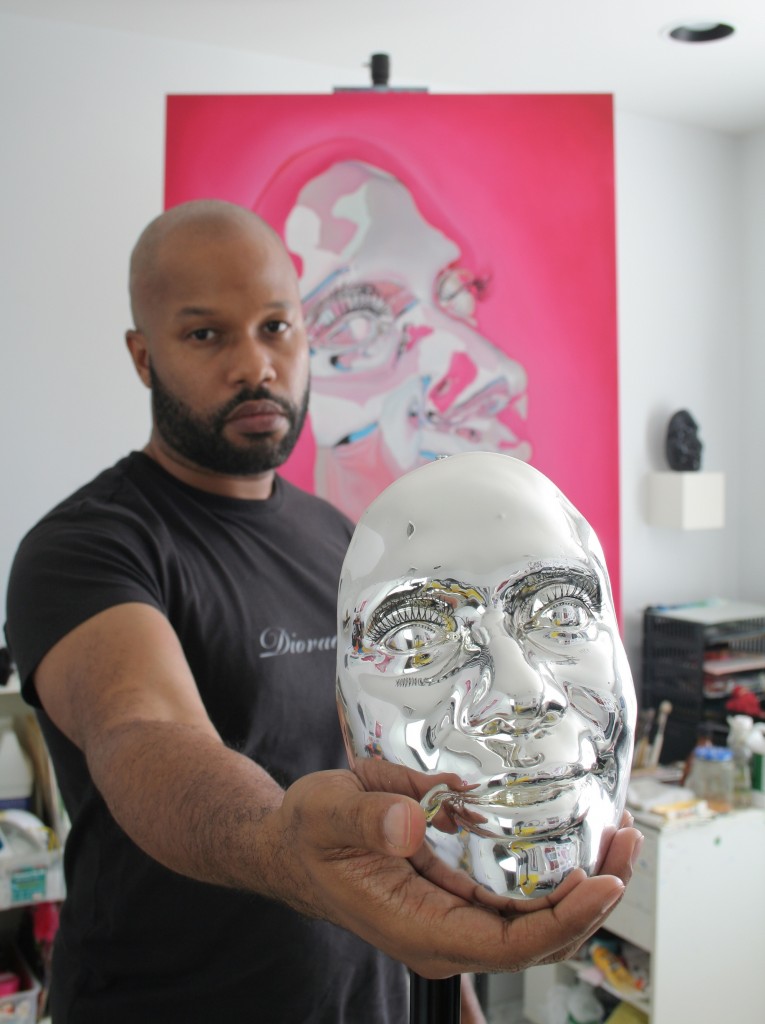
Have you considered selling the masks themselves? What is your idea of prop versus art piece?
Yes, I’ve thought of selling the masks themselves. During the process, I’ve always thought about displaying them as luxury items. In fact, when I’m finished with the sculptures, I usually ceremoniously mount each piece against a panel with my Diovadiova logo on it. I look at props as part of the art. The whole process itself of reproducing a reproduction of a reproduction of a reproduction of a reproduction of a reproduction is a kind of performance art.
Describe your process, including fabrication and photography as you arrive to the final end piece, which is the painting.
I start by making a mold and cast of the model’s face. I work the plaster sculpture by sculpting eyes and nostrils and refining the overall face. I use the sculpture to produce a resin version that is chromed. For the sculptures of women, I add eyelashes to match their personalities. I photograph the final sculpture and use references to paint on canvas.
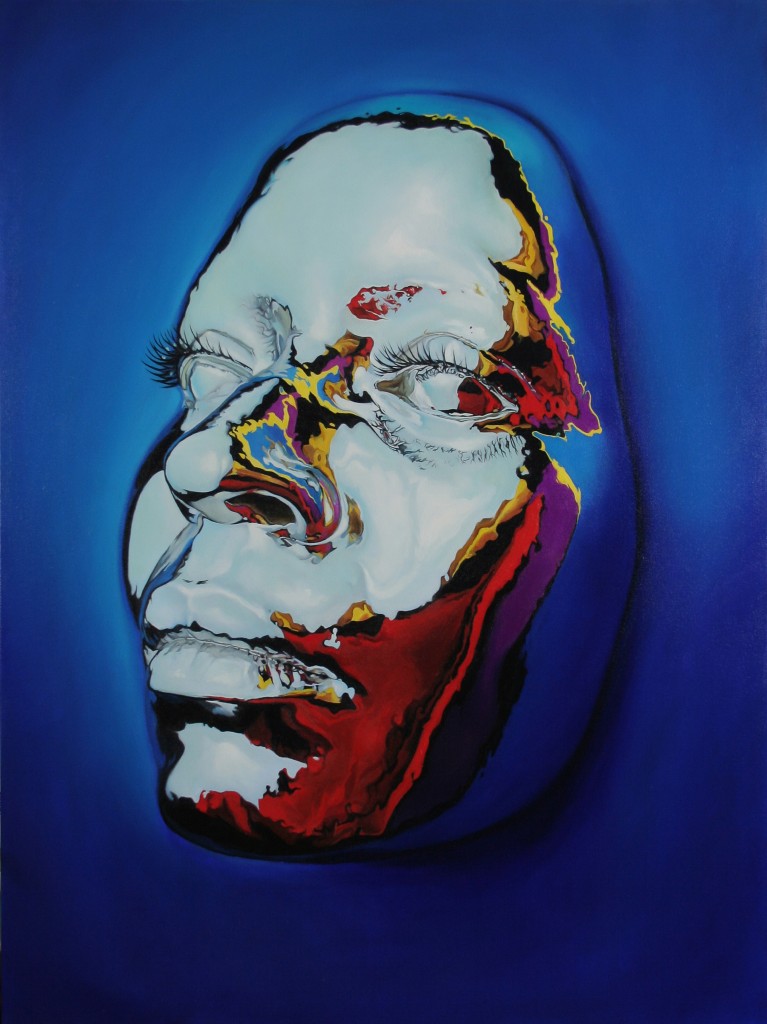
What’s the largest work you’ve done so far?
My largest painting so far is 96 x 74 inches.
What monumental or fantasy project would you want to do if money and time were no object?
I would love to travel the world and photograph my self-portrait chrome sculpture in various locales. I would also love to work on portraits of iconic people like Obama, Beyonce, Rihanna and Chuck Close.
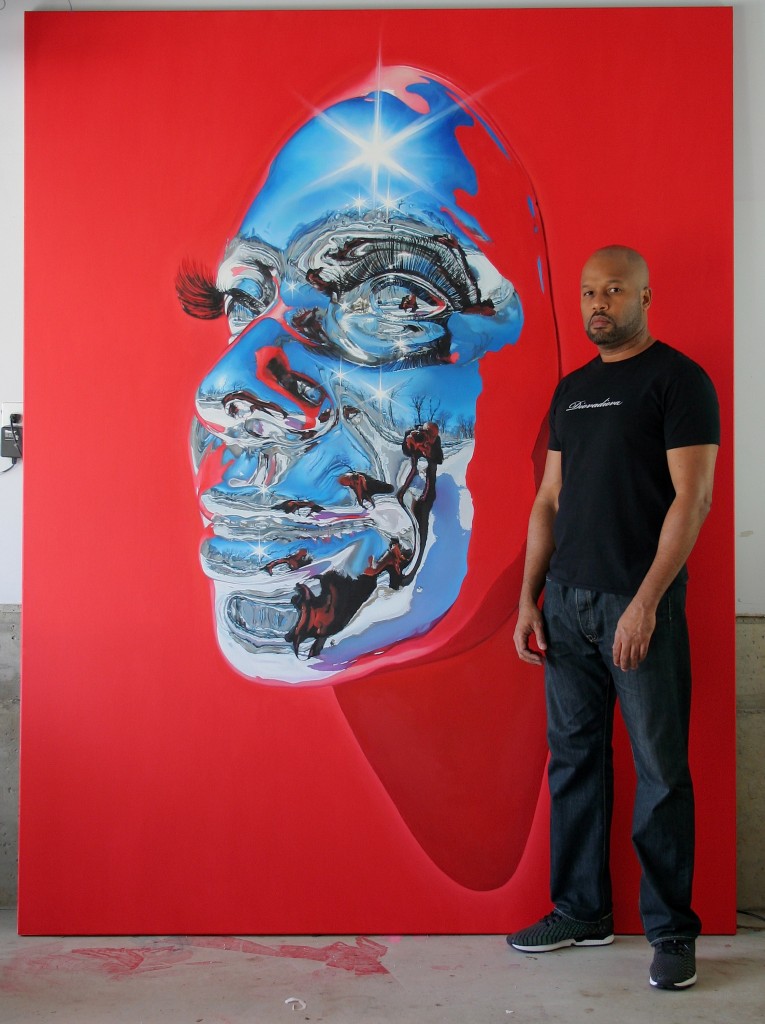
How has your experience working within the gallery system been?
The gallery system is a relatively new experience for me. I’ve been working independently and made more money on my own selling directly to clients. It’s fun to get all of the money directly, but there is something that’s still powerful about working with the infrastructure of an established gallery. They still have the connections and power to sell, so the artist can focus on creating. This is why my upcoming Diovadiova Chrome show at Jonathan LeVine marks an important moment in my career.
Who is collecting your work and what are they seeing in the work as opposed to your original intentions? Has your interaction with the public changed your approach in any way?
Most of my collectors are entrepreneurs who are interested in the universal look of my work. They pretty much get my original intentions of cultural ties but they also make an emotional connection.
Earlier this year, I had a show at Viacom in NYC and was happy with the reactions from so many different people from different nationalities and backgrounds. The experience didn’t change my approach but it was meaningful and confirmed my vision.
Originally featured in Juxtapoz Magazine Winter 2018 Issue




